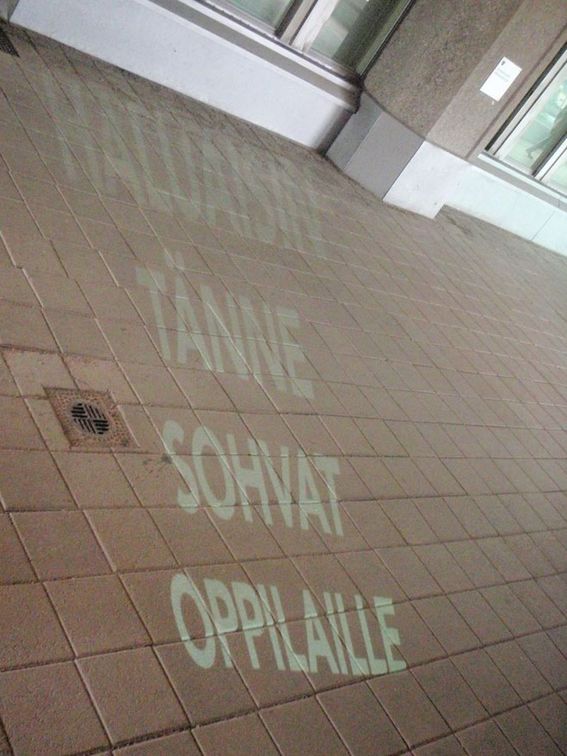Media Intervention in the City - MA elective course

Politically, socially, and structurally our societies are in flux. The certainties of a few years ago seem like naïve daydreams today. Nowhere can this be seen more clearly than in our city centres, and particularly the shopping malls that have become synonymous with contemporary consumerism. The traditional market square has transformed into the urbanite’s lounge, a place for spending time and being seen rather than fulfilling life’s basic needs. This public/private space questions concepts such as property, ownership, value, access, and permission. Who is allowed? What is allowed? Although these conditions affect everyone using the space, it is particularly relevant for artists working in public space – in this space that is at once both public but privately owned and controlled.
Media Intervention in the City is a Contemporary Art elective course for master’s students, taught by artist and lecturer Andy Best from the Centre for General Studies, Department of Art. The first course was organised in 2011, and over the years, students have worked in various public, off-campus city locations in Espoo and Helsinki, such as Kamppi shopping center, Tapiola, and Espoon Keskus. In spring 2019, students will work at the new REDI center in Kalasatama, Helsinki.

What does it mean to be an artist working in public space today? The concept of public art has transformed to mean more than just the proverbial sculpture in a plaza. Artists around the world are using media and methods of all kinds to make interventions in public spaces. Often the artist is motivated by social and political concerns and works closely with local inhabitants to develop and make the work. Artworks may be ephemeral or transitory fragments that appear and then merge back into the fabric of the city just as quickly. Often the artwork is difficult to recognise as ’art’ in the traditional sense. Objects, images or performances may intermix with the everyday goings-on in the cityscape such that they are like poetic insertions into the normal fabric of society.
In fact, the market itself is breaking. The financial crisis of 2008 showed that the capitalist system is living on borrowed time, yet politicians continue to bury their heads in the sand and carry on as usual. Globalised, real-time financial trading brings risk to everyone. Cash is disappearing, and alternative currencies such as Bitcoin are gaining momentum. What does it tell us when the richest 0.01% earn 1000’s of times more than the bottom 90%? How can we make these markets and figures understandable and visible to ordinary people? Do people even want to know?
Media strategies are mixed. The artwork may camouflage itself using the language and rhetoric of advertising, or perhaps by exploiting the vernacular architectural style. New media and high technology may be appropriate for projections, soundscapes or locative-media based projects, but in other cases low tech and the hand-made aesthetic may be more effective. Local history may be re-examined and exposed, or contemporary social and political concerns highlighted. Whatever the method, the aim is to uncover and expose some hidden truths in the locality in a way that is able to communicate with the person in the street.
This course has been taught by Andy Best, lecturer at Aalto School of Arts, Design and Architecture.
- Published:
- Updated:





